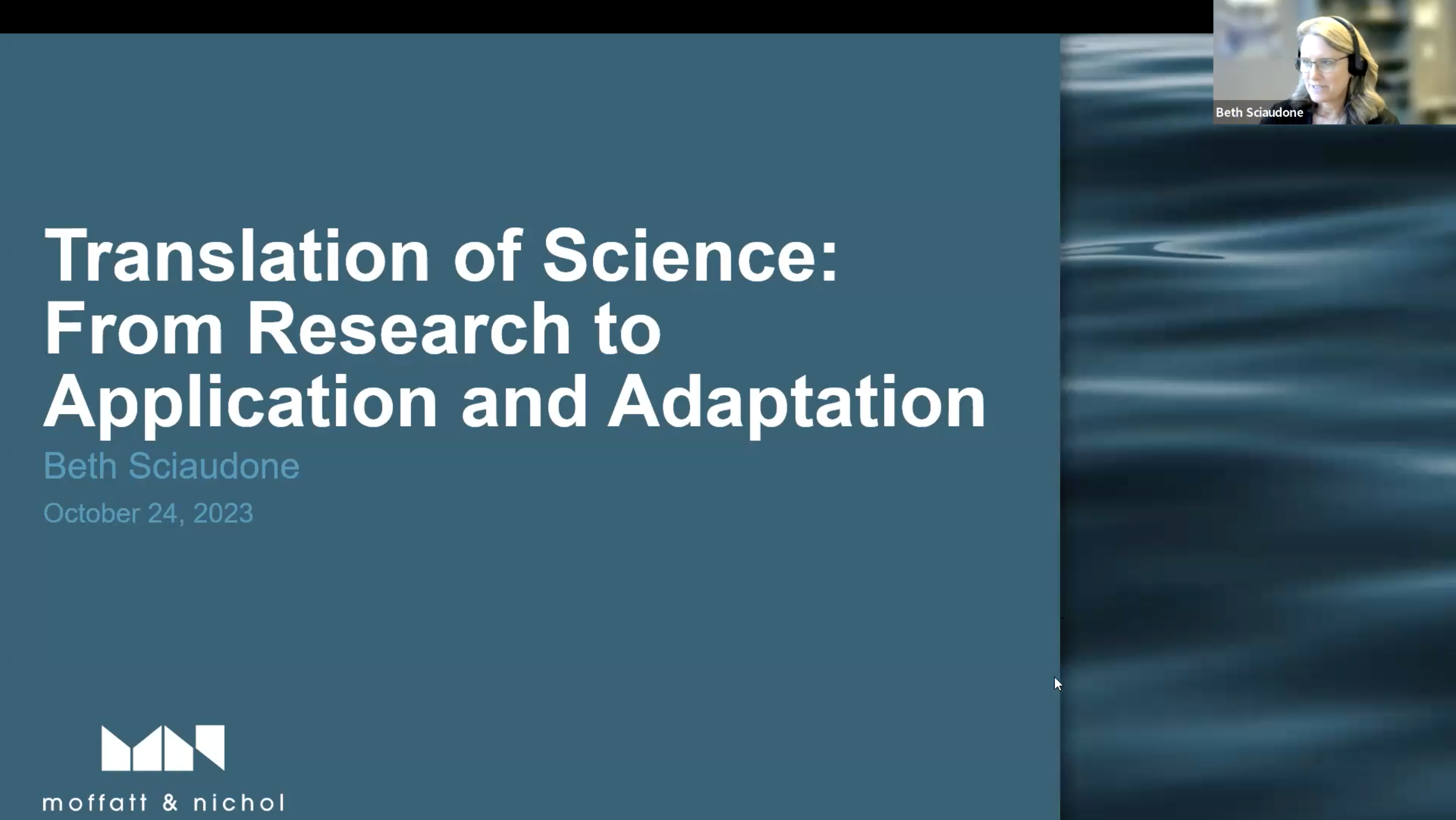Global Change Seminar Summary – Translation of Science: From Research to Application and Adaptation

The following is a guest blog by Global Change Research Fellow Darian Ng, summarizing the October 24 Global Change Seminar, Translation of Science: From Research to Application and Adaptation. This seminar was moderated by Global Change Research Fellows Kaleb Goff and Thomas Thelen with assistance from Myleigh Neill, Darian Ng, Jenero Knowles, and Titilayo Tajudeen on the planning team.
Navigating the space that follows scientific research is a crucial step in ensuring the successful translation of science in the real world. This holds particularly true for research surrounding climate change and adaptation, where the timeliness of scientific application is just as important as its effectiveness.
In this seminar, the Global Change Fellows hosted three distinguished scientists, Timothy Glotfelty, research scholar at the North Carolina State Climate Office specializing in climate models; Elizabeth Sciaudone, coastal engineer and former NC State professor; and Jeffrey Beane, herpetology collections manager at the North Carolina Museum of Natural Sciences. Our aim was to discuss their experiences in translating their science into applications in climate adaptation.
Dr. Timothy Glotfelty started off the seminar with an insightful overview of a collaborative project between the State Climate Office and blueberry farmers. The project applied climate models to help answer stakeholder questions of which blueberry varieties would be most resilient to our changing climate over the next 20 years. Dr. Glotfelty summarized the limitations of climate models, and demonstrated the importance of tailoring research questions to best address complex stakeholder questions and needs. While climate models could not tell stakeholders which blueberry varieties to plant, they could project the impact of climate change on the number of chill hours available that allow blueberries to maintain dormancies over the winter. Despite limitations stemming from model uncertainty, Dr. Glotfelty’s research was able to help stakeholder needs by projecting shorter chill seasons resulting from the mean change in climate.
Following Dr. Glotfelty, Dr. Sciaudone delivered a fascinating talk on her work with the NC12 Highway Pea Island Coastal Monitoring Program. This program was in collaboration with the North Carolina Department of Transport to monitor the vulnerability of the NC12 coastal highway to sea level rise. Analyses of various vulnerability indicators were compiled into annual reports to the Department of Transport to forecast the future state of the island highway in 2030 and 2060. These forecasts showed the extent of the existing roadway’s vulnerability to rising sea levels, and successfully guided the construction of a bridge to bypass the vulnerable areas of the island, and allowed old roadway to revert into a wildlife refuge.
Finally, Jeffrey Beane shared his extensive work with the North Carolina Museum of Natural Sciences as the manager of research and collections sciences in the Herpetology Department. His efforts ensured the preservation of long records of natural history data for a wide range of different species. Notable projects that Mr. Beane helped found were Project Simus, which collected 25 years of radiotelemetry data on several southeastern amphibians and reptiles, and Project Bog Turtle, an initiative to help protect the diminishing wetland habitats of Bog Turtles. Much of Mr. Beane’s research and collections work are guided by information needs from ongoing conservation research within North Carolina and Southeastern United States.
The seminar was concluded with a Q&A session, where the panelists together underscored the importance of transparency in scientific research, the influence of individuals in guiding research funding priority through state and federal legislation, and the necessity of perseverance in communicating the hard truths and validity of climate science. Together, these efforts are crucial for translating research that is now more important than ever into real-life applications and adaptations.
- Categories:
